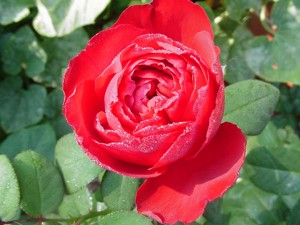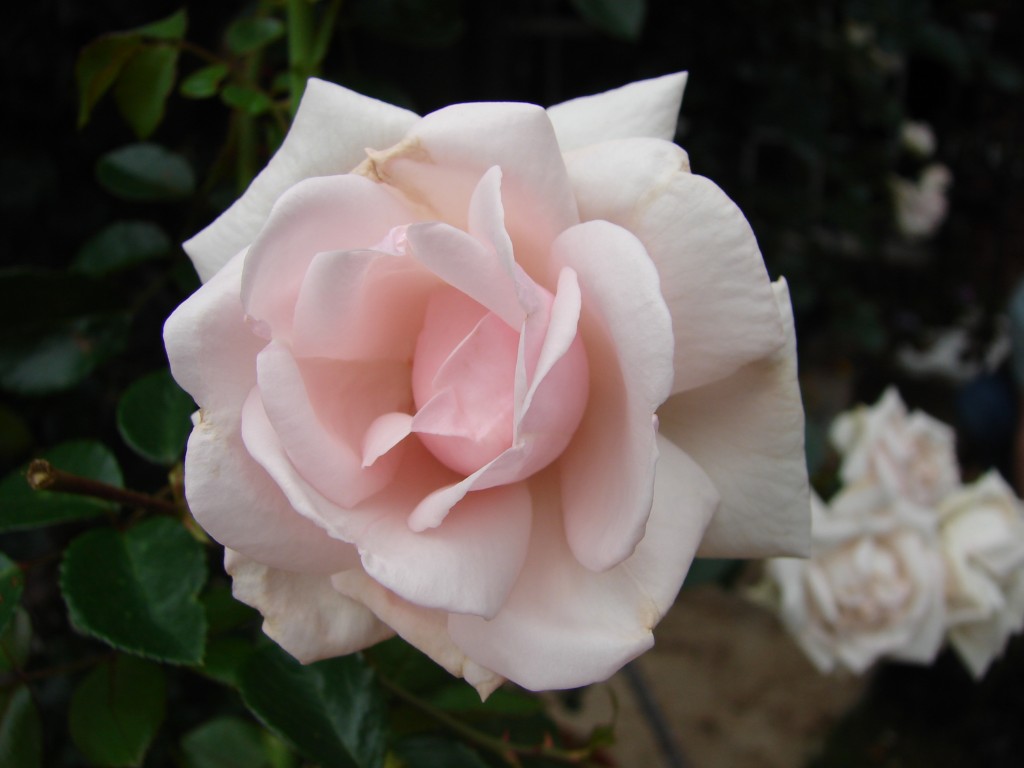
Traviata Rose
Every year I have a small problem with thrips. It seems like they emerge a couple of weeks before their predators do.
Thrips are those tiny little vampire gnat-like things that suck the blood out of your roses and make thier poor little heads droop. You can’t see them without a magnifying glass, but you know them by the damage they leave behind.
I usually just wait until the beneficial green lacewings (a very good bug!) catch up and eat them up. That way, I don’t have to go and buy green lacewings – they just come because they know that they have a chemical-free buffet waiting for them in my yard.
If it’s just driving me crazy or I’m feeling overly industrious, I will spray with garlic-pepper tea. Here is the recipe and it usually makes enough to last for more an entire season:
Garlic-Pepper Tea
Put a couple of hot peppers (habanero, jalapeno, cayenne, etc.) and a couple of cloves of garlic in a blender with a couple of cups of water and liquefy.
Pour the mixture through a strainer and pour into a gallon jug (I like the big glass apple jugs becuase I have had plastic milk jugs develop holes and leak)Add enough water to fill the jug.
Shake before using and add 1/4 cup of the mixture to a gallon of water in a large sprayer (or another jug to fill a small spray bottle).
Be careful with this concoction. It is lethal to more than just thips! It will also kill ladybug and green lacewings. Only use it when you really feel you have to.
Another thing you can do to deal with thrips are buy some green lacewings to release. I saw some in my garden yesterday. They are tiny, but really cool.
You could also spray with tobacco tea (cigarette butts with filters removed that have been soaking in a gallon of water for 24 hours thinned to a pale tea color) but I don’t smoke and rarely have cigarette butts laying around. Tobacco is another indiscriminate killer so use it with caution. Your ladybugs will thank you.
As a repellent, you can spray your roses with seaweed. That is has a bonus effect since the seaweed repels the thrips and also acts as a foliar feed for you plant.
So… please leave the Sevin, Dursban and Malathion to Bayer, Dow Chemical and Southern Agriculture. All three of these chemicals have shown to have health effects to humans and they have not eradicated a single pest, but they have created “super bugs” that have developed resistance. There – that’s my plea.




